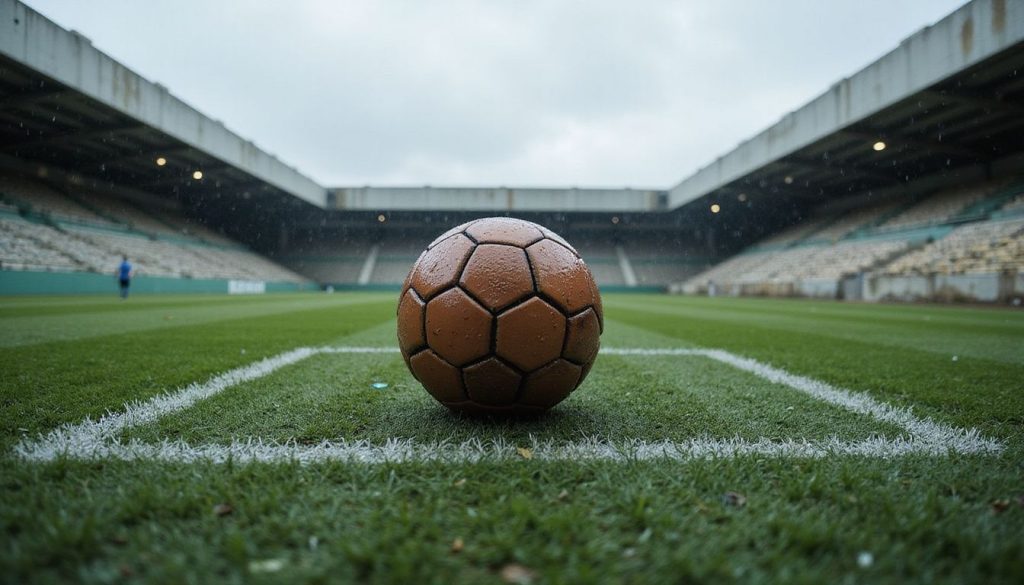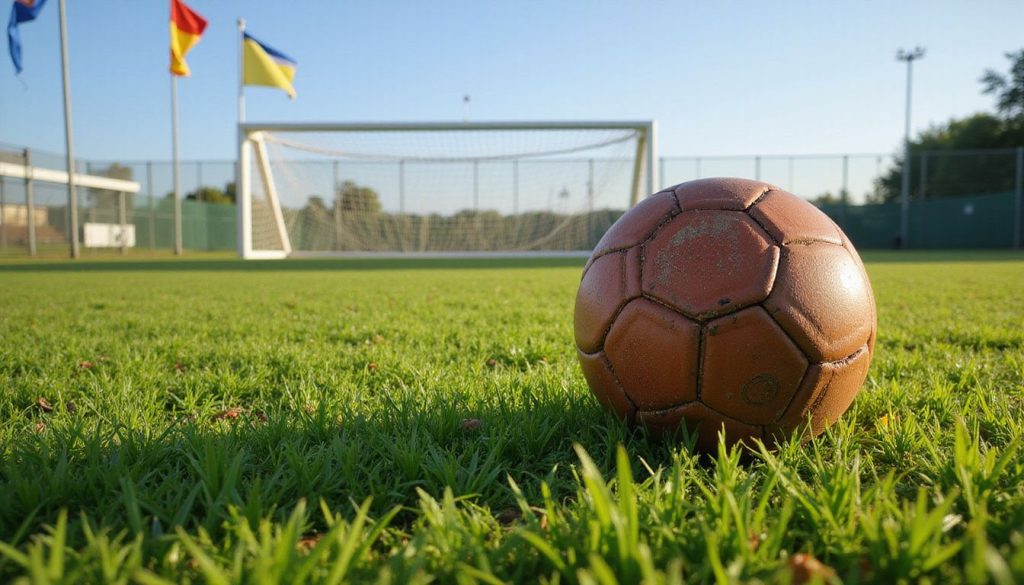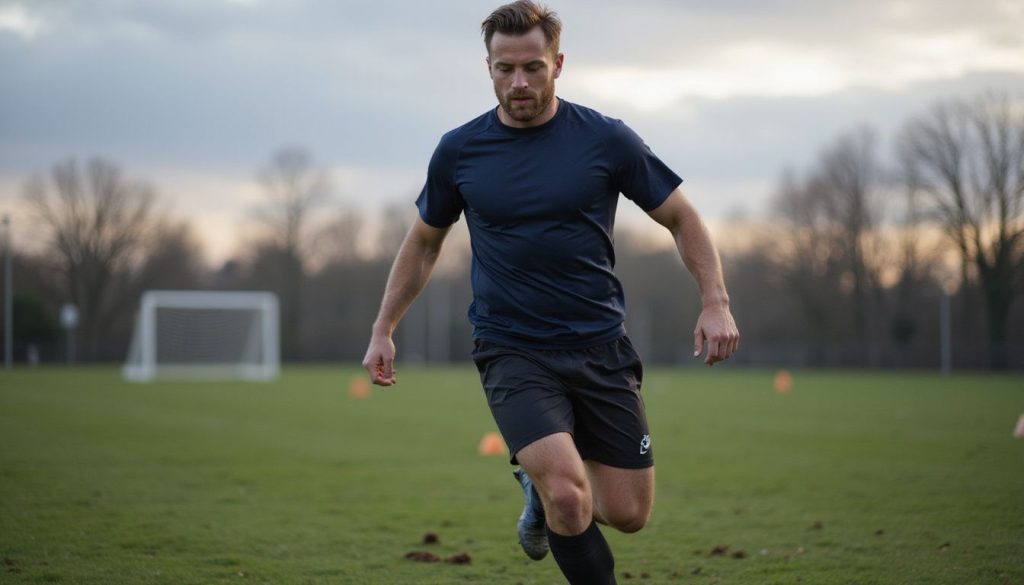Football Speed Ladder Drills
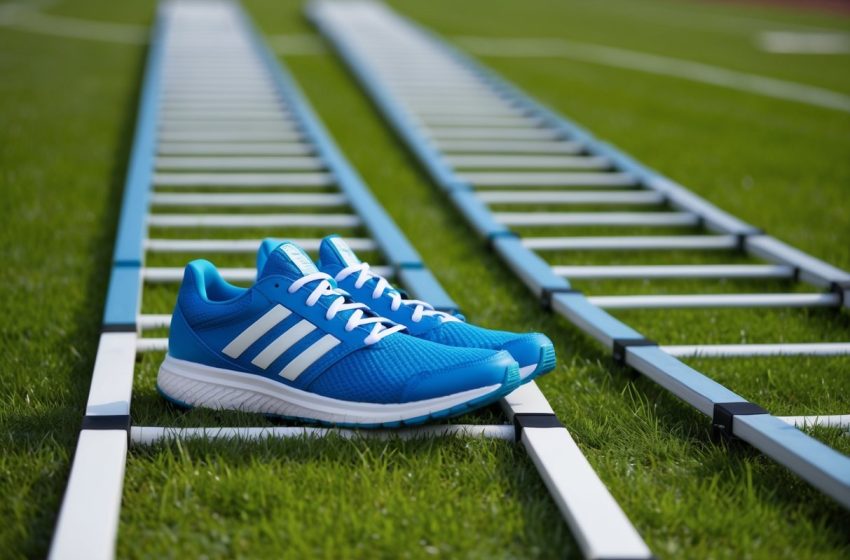
Football Speed Ladder Drills: Boost Agility and Quickness on the Field
If you’re looking to move quicker and sharper on the football field, you’ll find that agility ladder drills are some of the best ways to improve your speed and footwork. By practicing football speed ladder drills, you can boost your agility, reaction time, and coordination with simple, effective training. These drills are popular for a reason—they help both beginners and experienced players get faster and more confident in their movements.
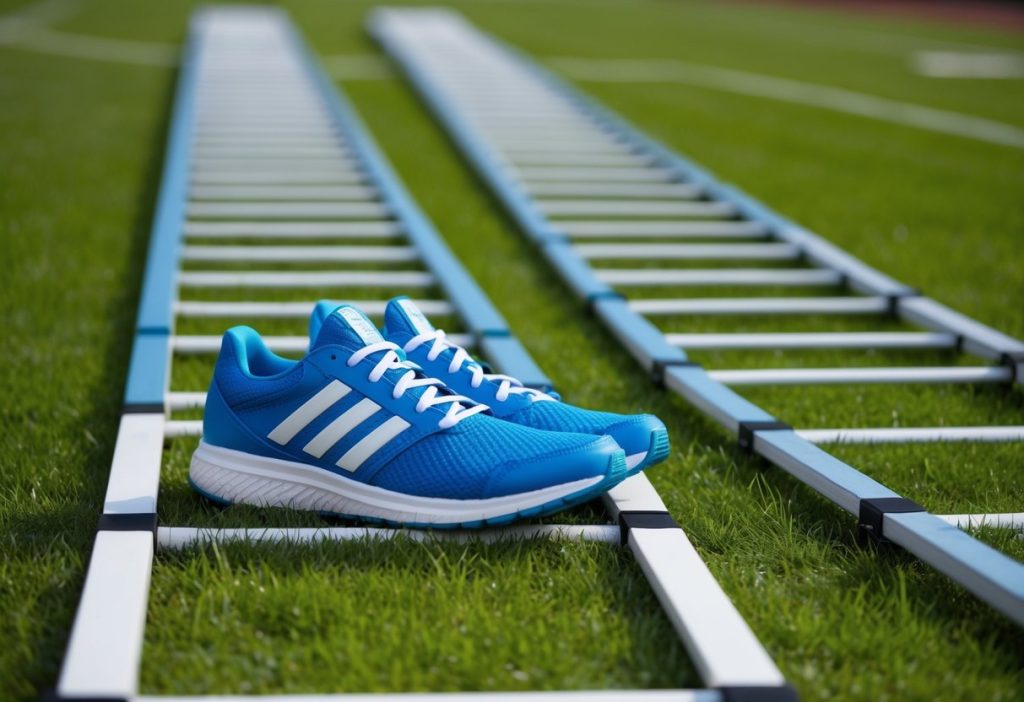
Even if you’ve never used an agility ladder before, you’ll be surprised at how quickly your feet learn to move with more control and accuracy. These exercises can make a big difference in games, whether you play offense, defense, or special teams. With just a little time and effort, you’ll notice your speed and balance getting better each time you step onto the field.
Benefits of Football Speed Ladder Drills

Speed ladder drills help you develop specific skills needed for football. You can use these drills to improve how fast and precisely your feet move, how well you control your body, and your ability to change direction.
Increasing Agility
Agility is about moving quickly and easily, especially when changing direction. Ladder agility drills train you to react faster to what’s happening on the field. You’ll find yourself able to dodge defenders, cut quickly, and recover your footing if you slip.
These drills mimic quick direction changes that happen in real games. Practicing with the speed ladder lets you build muscle memory. This helps your body move the right way without thinking too much. Adding these drills to football practice can raise your overall performance during matches.
Improving Footwork and Coordination
Good footwork is key in football, especially when dribbling, passing, or defending. Speed ladder drills make you move both feet in pattern sequences. This means both your left and right foot get quicker and more coordinated. You get better at controlling the ball and reacting to opponents.
Doing these drills also sharpens your coordination between your feet and your brain. Over time, you’ll find that you can change direction smoothly and with less effort. Ladder drills are used by players in every position to help control their movements, stay balanced, and avoid tripping or losing the ball.
Benefits List:
- Builds precise foot placement
- Increases reaction speed
- Improves timing and rhythm
Enhancing Balance and Body Control
Speed ladder drill routines help you gain better control of your body during fast movements. Every drill challenges you to keep your balance while moving in different directions. This ability to stay balanced is important for keeping possession or defending under pressure.
The drills also strengthen the muscles in your ankles, knees, and hips. Strong balance and body control help prevent injuries, too. Practicing often helps you stay steady even when you’re bumping into other players or making quick movements.
Maintaining control of your body means you’re less likely to fall or lose your footing during a key play. You become more confident with your balance, which carries over to all aspects of your football performance.
Essential Training Equipment

Your speed ladder sessions are most effective with the right gear. The main focus should be on a good agility ladder and helpful extras like cones, hurdles, or resistance bands to vary your drills and challenge your core.
Choosing the Right Agility Ladder
Selecting a strong and reliable agility ladder is key for full training sessions. Look for a ladder that is about 15 to 25 feet long and has adjustable rungs. This flexibility lets you change step distance and challenge yourself as you improve. Ladder material matters; nylon straps and sturdy plastic rungs last longer and stay in place during quick movements.
A standard agility ladder should lay flat and be bright enough to see in different weather. Some ladders come with stakes to anchor them for outdoor use, keeping your session safe and smooth. Carry bags add convenience if you’ll be moving between locations.
Choose a ladder that matches your skill level. Beginners may want a wider and less rigid ladder, while more advanced players will benefit from a tighter and narrower setup for precision drills.
Other Useful Gear for Drills
Besides the ladder, a few basic items can help you get more out of each session. Cones mark side boundaries, showing where to change direction or speed. Hurdles can be added for jumping and quick step work, building explosive power.
Resistance bands add a core workout to agility training by making you work harder against force. A jump rope is good for extra warm-ups and improving overall foot quickness. For group sessions, a timer or whistle helps keep drills organized and efficient.
Remember, the right training equipment can make drills both fun and challenging, helping you reach your football goals faster.
Core Football Speed Ladder Drills

Building strong footwork and improving speed on the field requires the right combination of drills. With focus on agility, quickness, and lateral movement, you can train your feet and hips for game-like situations through these speed ladder exercises.
Basic One-Two Step Drill
The Basic One-Two Step Drill is often the first exercise used for speed ladder training. You move forward by placing one foot in each square of the ladder, following with the other foot right behind. This stepping pattern helps you develop rhythm and proper stride length.
You should stand tall and pump your arms as you step through the ladder. Keep your head up to build awareness similar to what you’ll need in a real football match.
Practicing this drill boosts your foot speed and gets your muscles ready for more advanced movements. It’s simple, but focusing on accuracy makes a big difference. If you go too fast too soon, your form may get sloppy. Aim for a balance between speed and control, and repeat the drill several times in each workout.
Lateral Movement Drills
Lateral movement is a key part of football, helping you shift directions to avoid defenders or reach the ball faster. Lateral speed ladder drills have you move side to side through the ladder, instead of forward.
A common drill is the side shuffle. Start at one end of the ladder, facing sideways. Step in and out of each square with both feet. Keep your knees slightly bent, your hips low, and your chest up. Focus on quick, light steps and always lead with the foot closest to the ladder.
This type of training improves your agility and strengthens the muscles around your hips. The side shuffle also builds coordination and helps you learn how to stay balanced while changing directions quickly. Adding lateral movement drills to your routine makes you better equipped to handle the rapid shifts common in football.
In-and-Out Drill
The In-and-Out Drill is designed to sharpen both foot speed and coordination. Stand facing the ladder and step inside the first square with both feet, then out to the sides of the ladder, and then back in for the next square. You repeat this in-and-out footwork for the length of the ladder.
This drill forces you to work on both speed and accuracy. Fast steps help you develop explosive quickness, while keeping your movements tidy helps prevent tripping or stumbling. It also assists in firing up the muscles around your ankles and hips, which are important for sharp turns and bursts of speed.
Your goal is to stay on the balls of your feet, land softly, and keep a steady pace. Try to minimize the time your feet are in contact with the ground. You’ll notice your footwork can become quicker and more precise with regular practice.
Ickey Shuffle Drill
The Ickey Shuffle Drill is a more advanced ladder exercise that helps boost coordination, rhythm, and agility. Start at the side of the ladder. Step your lead foot into the first square, followed by the other foot. Next, move your outside foot to the ground outside the ladder. Repeat this pattern, weaving in and out for the length of the ladder.
This drill trains your feet to move efficiently both forward and laterally. Keep your hips turned slightly to the side, and use your arms to help with balance. The Ickey Shuffle is popular because it mimics the rapid, multi-directional footwork used in football.
Key points are to keep your steps light and quick, staying low to the ground. If you master this drill, you’ll see better lateral movement, improved quickness, and better control in tight angles on the field.
Advanced Ladder Drills for Performance

Pushing yourself with advanced ladder agility drills helps boost your speed, coordination, and cardio fitness for football. Focusing on resistance, lateral movements, and direction changes, these drills help you build strength, core stability, and better body control.
Crossover Steps
The crossover step drill helps you work on lateral speed and footwork at the same time. To do this drill, face sideways to the ladder and move down the length by crossing one foot over the other, making sure both feet touch inside every box.
Keep your hips low and your arms active for balance. This movement builds coordination, quick feet, and core stability. It also trains your body to keep control during fast, sideways actions on the field.
You will also improve your acceleration and direction changes by staying light on your toes. Try the drill both right and left to work both sides evenly. Aim for precision rather than just speed.
Resistance Speed Ladder Drills
Adding resistance, such as resistance bands, to your ladder drills makes your muscles work harder. Use a light band around your waist or thighs while performing basic ladder movements like high knees, in-and-outs, or lateral shuffles.
Resistance drills improve muscle strength, core stability, and acceleration. They also challenge your body control, as you must fight against the pull of the band while keeping your form tight. Use slow, controlled steps at first.
As you get stronger, increase the resistance or add a partner holding the band. This type of training pushes your coordination and tests your cardio, preparing you for fast, tough plays on the football field.
Multi-Directional Drills
Multi-directional ladder drills train you to move forward, backward, and side to side in rapid sequences. Start with a forward run through the ladder, then switch quickly into a lateral movement, and finish by moving backward, all without stopping.
These drills push your agility and foot speed because you need to adjust to new movements quickly. Stay low, use your arms for balance, and focus on planting your feet properly in each box.
By changing your direction at full speed, you build overall body control and responsiveness. This translates to faster reactions and better performance in changing game situations. Mix up the order of movements to keep your training fresh and challenging.
Optimizing Your Training Sessions
Making your football speed ladder drills as effective as possible means focusing on getting ready the right way, staying sharp during each movement, and choosing the best layout for your sessions. This approach helps you get faster and more skilled with every training session.
Efficient Warm Up Techniques
A solid warm-up reduces your risk of injury and gets your body prepared for football training. Start with 5–10 minutes of light jogging to increase your heart rate and circulation. Follow with some dynamic stretches like leg swings, arm circles, and high knees.
Focus on movements that mirror football actions, such as short sprints and quick changes of direction. Gentle skipping, hopping, and light ladder drills at a slow speed also help. These drills activate the muscles in your legs, hips, and core, which are key in speed and agility work.
Make sure all adult members of your team are moving safely before adding harder exercises. This will make your speed ladder session more effective and help set a standard for good practice in the United States.
Maintaining Quality and Form
Staying focused on quality and good form during every drill matters more than how fast you move. Always land on the balls of your feet, keep your knees slightly bent, and use your arms to keep balance. Good posture helps you change directions more quickly and safely, which is vital for football.
If you’re coaching a team or you’re an adult running your own session, encourage short, intense bursts followed by brief rests. Avoid letting form slip, especially when tired. Slow down if you need to, making sure every movement is clean and sharp.
Watch for common mistakes like crossing your feet or letting your hips sag. Being careful with form will boost your footwork and keep your training safe and productive. Quality brings better results than just going through the motions fast.
Structuring a Ladder Drill Session
A clear session structure makes training both efficient and easy to follow. Start with your warm-up, then move on to basic ladder drills for about 5–10 minutes. This could include single-leg hops, in-and-outs, and lateral movements.
After mastering the basics, add in more advanced patterns like zigzags or diagonal runs. Limit each drill to short intervals—about 20–30 seconds—with a quick 30-second rest between rounds. Rotate through 6–8 different ladder drills to keep things fresh.
Consider ending your session with a cool-down and stretches. This helps your body recover and prepares you for the next practice. Keeping a consistent structure helps adults and teams of any level build a steady standard for future football speed ladder sessions.
Frequently Asked Questions
Agility ladder drills can help you improve foot coordination, quickness, and balance for football. With the right drills and progressions, you can build better movement skills, even without expensive equipment.
What are some effective agility ladder drills for improving speed in youth football?
Some good drills include the one-in and two-in foot patterns, where you step in each square with one or both feet. Lateral shuffles and in-and-outs train side-to-side movement.
Ickey Shuffle and high-knee runs are also popular. These drills help young players move their feet quickly and maintain control.
How do beginners get started with football speed ladder drills?
Start slowly. Focus on proper foot placement and moving through each drill smoothly.
Begin with basic patterns like single steps or two steps per square. Once you feel comfortable, increase your speed. Short training sessions, about 1-2 minutes per set, help avoid fatigue and build skills safely.
Can you recommend any agility ladder drills that don’t require any equipment?
You can use tape or chalk on the ground to create your own ladder. Imaginary ladder drills also work well if you can picture the squares.
Footer taps, lateral jumps, and quick step-ins can all be done without a real ladder. Accuracy and quick feet matter more than the equipment.
Where can I find a comprehensive PDF or printable guide to agility ladder drills?
Many sports training websites offer free PDF guides for ladder drills. Try searching terms like “agility ladder drills PDF” or visit football coaching sites.
Local coaches or teams may also have printable sheets you can use. Always check that the guides include pictures and clear instructions.
How are ladder drills beneficial for football training specifically?
Ladder drills develop fast foot movement, coordination, and body control, which are important for football. These help you react faster and improve your balance during plays.
Regular practice also teaches you how to change direction quickly, which is key for avoiding tackles or defending.
What is a good progression of ladder drills to build soccer footwork and agility?
Start with simple in-and-out steps or single-leg hops. Move to more complex patterns like sideways shuffles or crossover steps as your footwork improves.
Gradually increase the speed or try to complete the drills under a time limit. Challenge yourself by combining different moves or adding a ball once you are ready.

